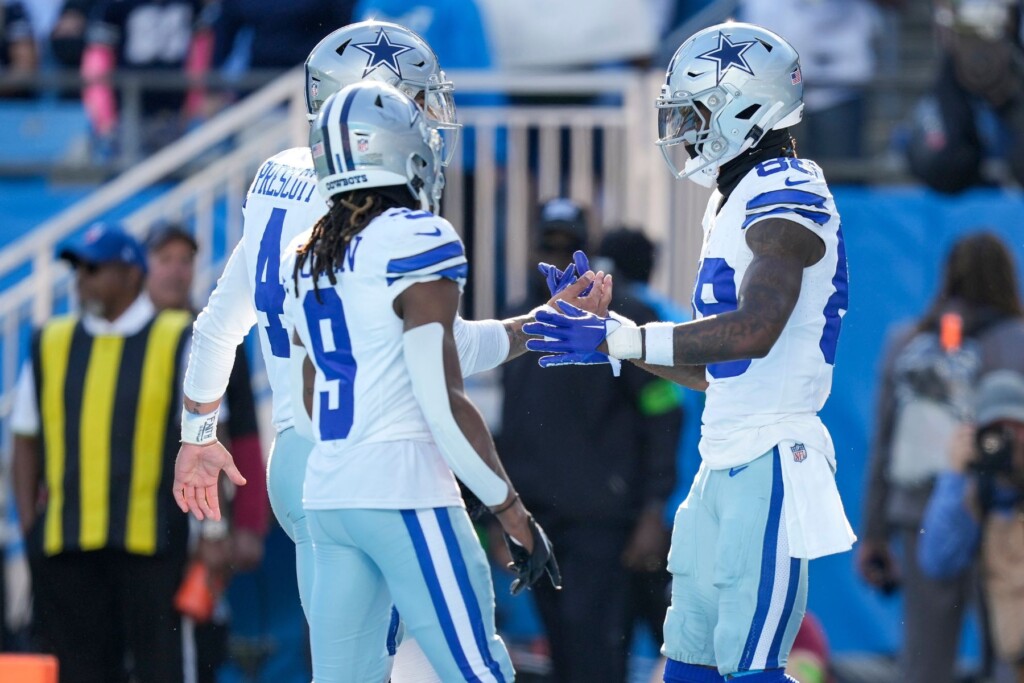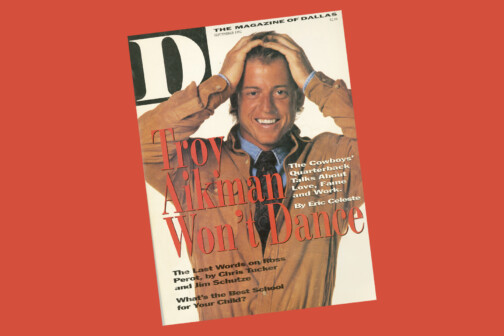Most teams do not have a collection of talent on par with what Dallas has assembled, and the Carolina Panthers certainly are not on that list. So it didn’t come as much of a surprise that the Cowboys did to the Panthers what they usually do against a team of that ilk: destroy them.
Micah Parsons and company lived in the opposing pocket. DaRon Bland housed an interception. Dak Prescott diced up the defense using his collection of talented targets. There isn’t a ton to take from a game like this, because, as we’ve said many times, we won’t be impressed until they put it all together and beat a top-tier opponent. Preferably in the postseason.
However, it is worth discussing how the Cowboys dissected Carolina, particularly on offense. This team has made notable changes since the Week 7 bye, and while the quality of opponents has been an obvious factor, being in the Eagles game is a significant sign that a new game plan has been transformative.
Let’s start with pre-snap motion, an area Dallas had never leaned hard into, at least not relative to teams like the Dolphins, 49ers, or Chiefs. Over the last two seasons, with Kellen Moore at the reins, the Cowboys were roughly league average in their usage of motion and shifts. Ostensibly, this was a decision the head coach made to reduce the chance of pre-snap penalties, which have been an issue during Mike McCarthy’s tenure in Dallas.
But whatever the impetus was, that went out the window during the bye week. The Cowboys have jumped from 16th (pre bye) to seventh (post bye) in their utilization of motion and shifts, from 52 percent to 60. More motion doesn’t inherently lead to better production, and coaches who resist will often decry the idea of “motion just for motion’s sake.” But there is data that, in general, it makes life easier on the offense. Beyond making it easier to diagnose coverages pre-snap, the chic new “exit motion” strategy the Dolphins debuted this year gives players essentially a running start to their route, forcing defenders to react off the back foot even more than they already were. Given the collection of speed the Cowboys have on offense, it just makes sense for Dallas to utilize it at a rate closer to the top of the league rather than the middle. And over the last four games, McCarthy and nominal offensive coordinator Brian Schottenheimer have done just that.
There were also concerns through the first month of the season that while the Cowboys’ offense was good, it was too safe to be great. Through the first six games of the season, Dallas ranked 23rd in deep passing attempt percentage (throws traveling at least 20 yards in the air), at 10 percent. The teams around the Cowboys in this ranking almost exclusively field quarterbacks who are not good, whose team doesn’t trust them yet, or both. In Dallas, this resulted in Prescott posting one of the lowest turnover-worthy play rates in the NFL, which is significant, following last season’s interception spree. But his average depth of target ranked near the bottom of the league, and the offense stagnated accordingly.
Some of that came down to the context of games, but still, not ideal for a passer making $40 million a year in his eighth season.
Through the last four games, though, Dallas has jumped all the way to second in deep passing attempt percentage, nearly doubling their percentage. Prescott is sixth in average depth of target over this stretch; his percentage of turnover-worthy plays is actually lower. The offense has received a makeover, and Prescott is balling out of his mind, completing almost 71 percent of his passes during that span, while averaging 317.8 yards per game to go with 13 touchdowns and just two picks.
There are other, smaller changes in the implementation and execution. For one, Prescott is scrambling about twice as often, going from 23rd to 11th. He is certainly not going to be as frequent an option in the run game as he was early in his career, but he is adept at moving outside the pocket when a play breaks down and finding an open target. I consider him to be one of the NFL’s best passers on the run, and we just weren’t seeing much of that early in the season. Now we are. It helps that the offensive line is allowing less pressure post-bye week, too, but when a rusher does get near Prescott, he has looked more comfortable manipulating the situation and still getting the ball downfield.
We’ve also seen minor tweaks to the alignments and formations McCarthy and Schottenheimer are using. Dallas was league average last year in using “bunch” formations—three pass-catchers tightly grouped together—at 34 percent. Through the first six games of this season, the rate was 30 percent, good for 25th league-wide. Over the last month, it has shot up to 40, and the rank is up to 11th. Bunch formations are a simple way to create mismatches and confusion within the secondary, as defenders have to do a lot more guessing about which player or route they will be responsible for.
So, how did this all happen? The team website reported an interesting note about what exactly the team did during the bye week, sharing different personnel groupings engaged in what they call “across the hall” meetings, in which offensive players met with defensive coaches to better understand their tendencies. “Across the hall is one of the best things that we do,” Dak Prescott told Nick Harris. “Obviously, there’s not a lot of times that you have that you can implement that in your schedule. When they went in and dissected us from a defensive coordinator’s point of view and gave us some good things, it was just all around awesome.”
Even with the rigors of the weekly schedule, you’d like to think time could be made for this more often, even if there’s more to this turnaround than Prescott and offensive staff asking Dan Quinn and his crew, “What do you not like having to defend?” and getting a response of “Confusion as a result of motion, deep shots to speedy receivers, a quarterback that can escape pressure and accurately hit his target, and more variation in formations.” And, again, none of these changes ensure better offensive production. It’s also on the team to prove that this production can continue to hold up when the schedule toughens up again in 10 days, when Dallas plays Seattle to kick off a gauntlet that also includes Philadelphia (again), Buffalo, Miami, and Detroit.
But since McCarthy started calling plays, there have been too many stretches when Dallas looked stale, stagnant, and predictable on offense. It seemed as if the coaching staff thought they could win on talent alone and rely on their quarterback to bail them out on third down. Which Prescott often did, but the game plan exists to make life easier on both him and the offense as a whole. Finally, the Cowboys appear to be embracing the sort of wrinkles that can do just that.
Author







